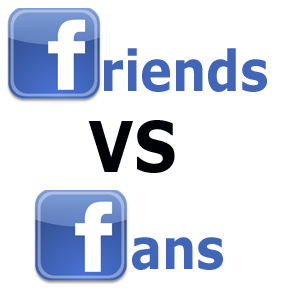Before you go much further, you are going to need to decide which profiles you are going to use for selling through social networking, and which ones are going to be private and personal.
Some of you, who are more experience on social networks, already know what I am talking about here, so you might jump to the next section with the tips. If you don’t understand the privacy settings and primary purposes of the main social networks, keep reading. You definitely need to pay attention to who sees what!
For example, as a Business-To-Business consultant, I rarely add clients or networking partners to Facebook. Facebook has pictures of my young niece and nephew, other awkward family photos, and personal information about my wife and I, which I prefer not to be public. I focus my social networking for business on LinkedIn, so that is where I always request connections from clients and prospects. Twitter and Google+ are interesting because you don’t have to reciprocate, so others can follow you whether you add them back or not. To me this makes it very public since I can’t stop others from viewing and adding me. I tend to be very careful about what I post on these two and use them solely for business.
Google+ is the only social network to date that allows you to create “Circles” of contacts and only share certain information with certain circles. That means I can share business information with business circles, and family photos with my family circle. It is a very interesting tool, but use it wisely to avoid over-sharing.
The other choice you are going to need to make is whether or not you create a Business Page or add connections to your personal account.
Facebook and Google+ allow you to create dedicated pages for your business that operate with different settings and tools than your personal account. Twitter accounts can be used for anything, just make sure you decide your strategy before you get in too deep. LinkedIn is very interesting here. You can create a business page, but they will create one for you, once you have multiple employees on LinkedIn. After that, you can claim your business and customize your page.
I recommend that owners build audiences on business pages for marketing purposes to make sure they stick around should an employee leave, change roles, or the business change hands. However, people buy from people and they network with people, not companies. So for the purposes of this book, it will be better if you have a face and name to the business for sales purposes. You can’t create meaningful conversations with a brand.
Think about it. You can’t be friends with Pet Smart. You can’t connect with 24 Hour Fitness. You can’t start a conversation with Home Depot. People buy from human beings who they like. They talk to Eric at Home Depot. They connect with Laura, the personal trainer at 24 Hour Fitness. They are friends with Kim, the groomer at Pet Smart. Because of this, you should to try to put a name and a face with your online social networking activities.
That being said, it is way more important that you choose whether you are going to build business or personal profiles, than which type you actually choose.
Decide now whether you are marketing on behalf of a company or selling as a professional salesperson at the organization.


